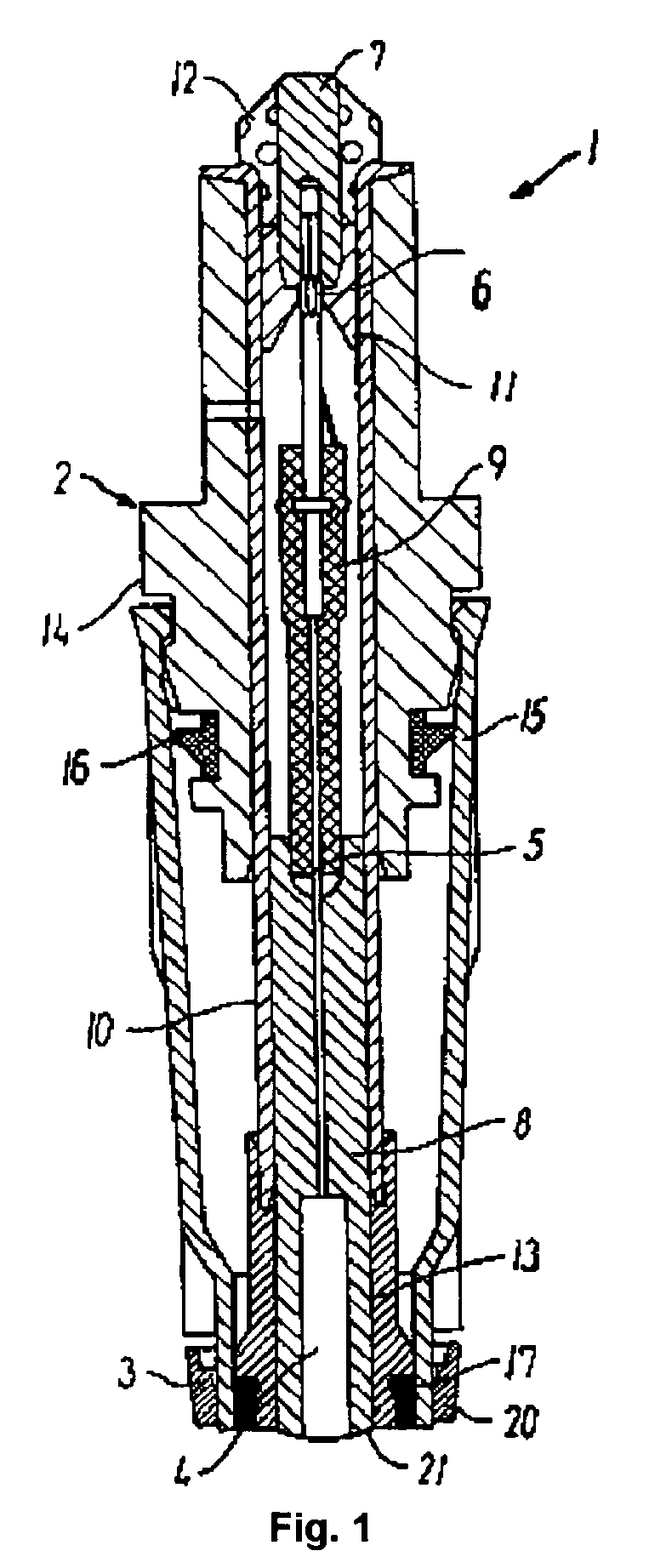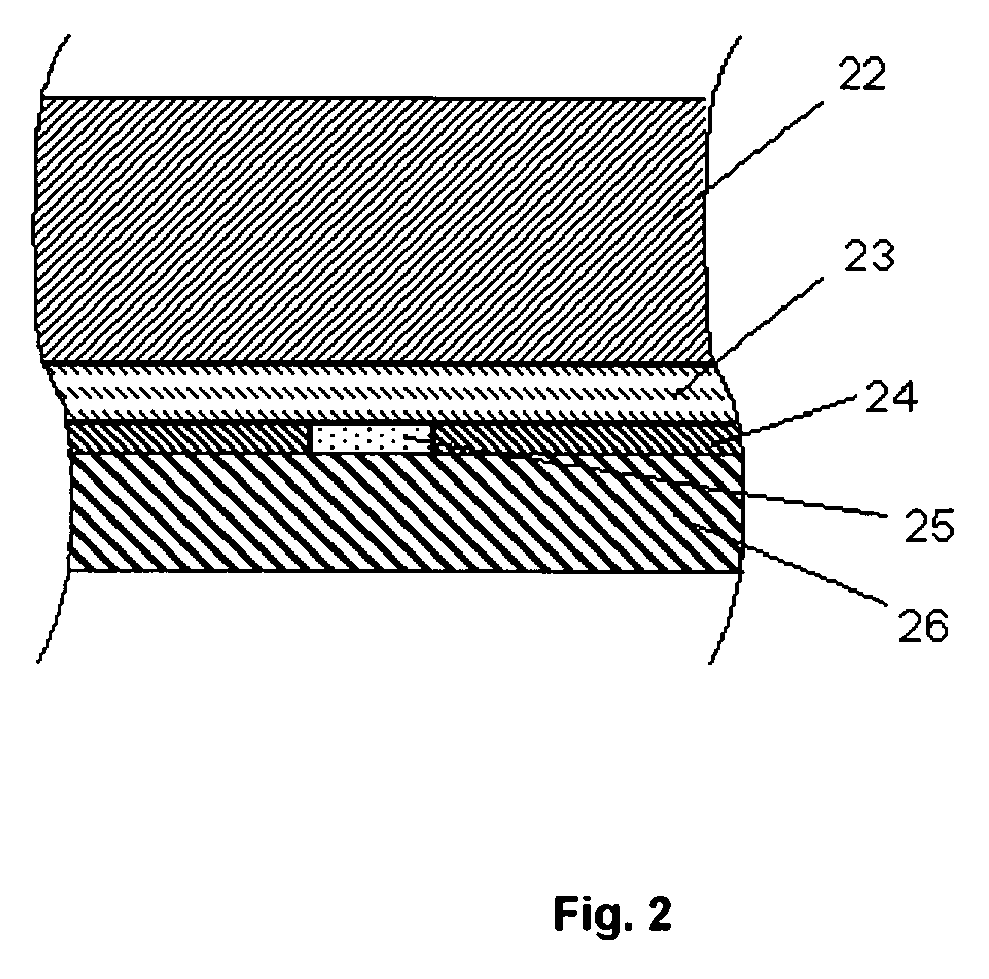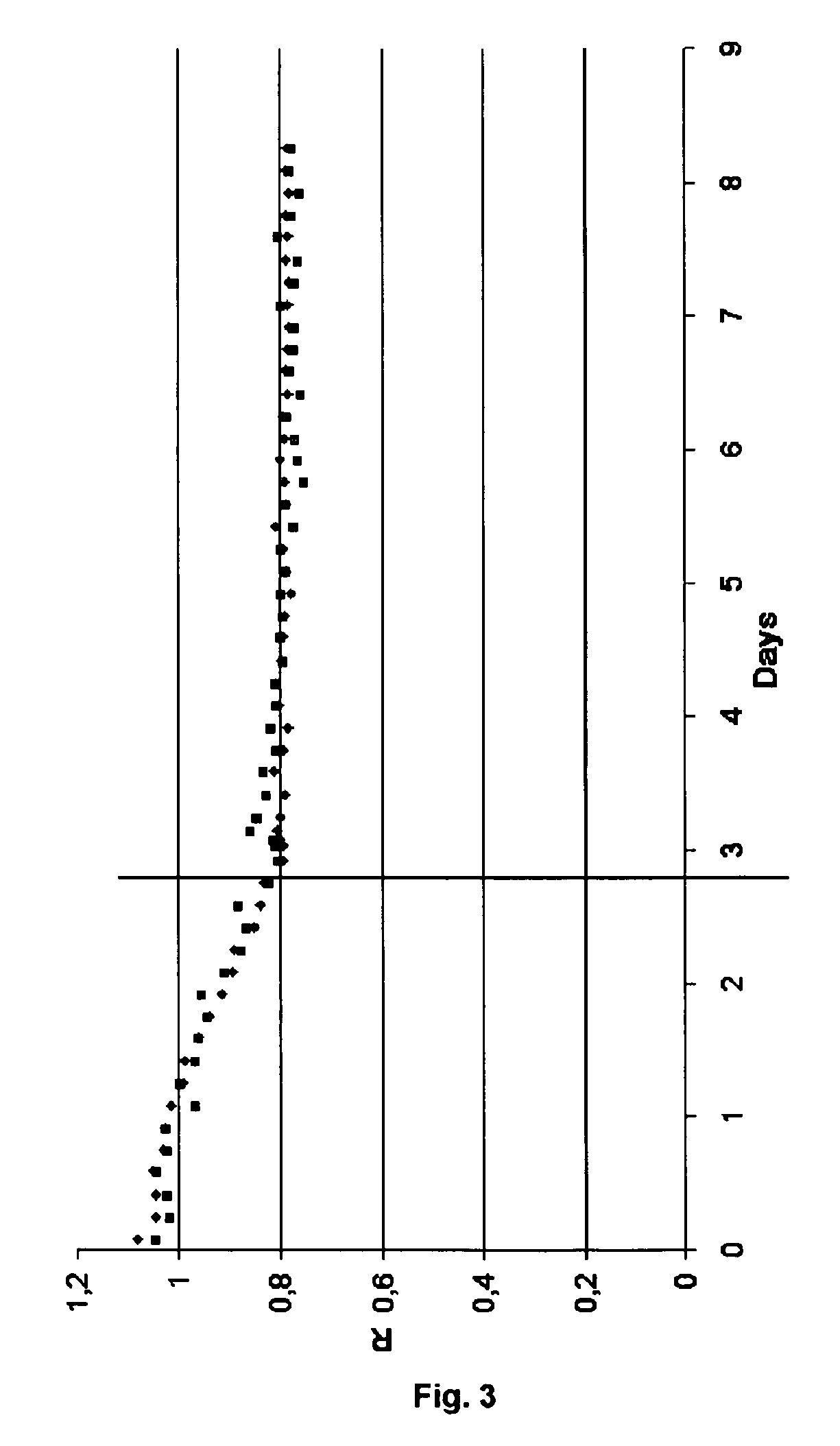Method of stabilising or reactivating a creatinine sensor with a divalent manganese ion
a creatinine sensor and divalent manganese technology, applied in the field of method of stabilising or reactivating a creatinine sensor with a divalent manganese ion, can solve the problems of short use life of the sensor system, reduced sensitivity, and relatively high concentration of manganese required for reactivation of metal-depleting enzymes
- Summary
- Abstract
- Description
- Claims
- Application Information
AI Technical Summary
Benefits of technology
Problems solved by technology
Method used
Image
Examples
example 1
Influence of Manganese on Creatinine Sensor Measurements
[0097]A blood analyser of the type ABL™735 from Radiometer Medical ApS, Denmark, was modified to accommodate the dual sensor system described above (“Exemplary sensor construction (conventional sensor)”).
[0098]Various concentrations of manganese were added to samples of the Radiometer Rinse Solution 54970. Manganese was added in the form of manganese(II) acetate to obtain concentrations of about 2 μM and 10 μM, respectively.
[0099]The stability of the creatinine sensor was tested by observing the sensor responses to calibration solutions containing each of the substrates creatinine and creatine.
[0100]The calibration solutions were prepared by dissolving about 200 μM creatinine in the Radiometer Calibration Solution 1 S1720 and about 200 μM creatine in the Radiometer Calibration Solution 2 S1730. These solutions were repeatedly introduced into the apparatus one after the other and sensor responses were obtained.
[0101]When introdu...
example 2
Operation of a Creatinine Sensor
[0107]A blood analyser of the type ABL™ 837 from Radiometer Medical ApS, Denmark, was modified to accommodate the dual sensor system described above. The cleaning solution comprised a 10 μM concentration of divalent manganese ions. The sensor cleaning solution was also used form storing the sensor between measurements and calibrations.
[0108]The standard protocol for the apparatus include a one-point calibration (one calibration liquid) every four hours and a two-point calibration (two calibration liquids) every eight hours. Typically, about 40 measurements are conducted every day (24 hours).
[0109]When a calibration or sample measurement is conducted, the cleaning solution was removed from the sensors and the calibration liquid or the sample, respectively, was pumped to the sensors. The sample / liquid was allowed to stand for 30 sec. The calibration liquid or sample was then removed by means of a flush of the cleaning solution which was then allowed to ...
PUM
| Property | Measurement | Unit |
|---|---|---|
| molar concentration | aaaaa | aaaaa |
| concentration | aaaaa | aaaaa |
| diameter | aaaaa | aaaaa |
Abstract
Description
Claims
Application Information
 Login to View More
Login to View More - R&D
- Intellectual Property
- Life Sciences
- Materials
- Tech Scout
- Unparalleled Data Quality
- Higher Quality Content
- 60% Fewer Hallucinations
Browse by: Latest US Patents, China's latest patents, Technical Efficacy Thesaurus, Application Domain, Technology Topic, Popular Technical Reports.
© 2025 PatSnap. All rights reserved.Legal|Privacy policy|Modern Slavery Act Transparency Statement|Sitemap|About US| Contact US: help@patsnap.com



